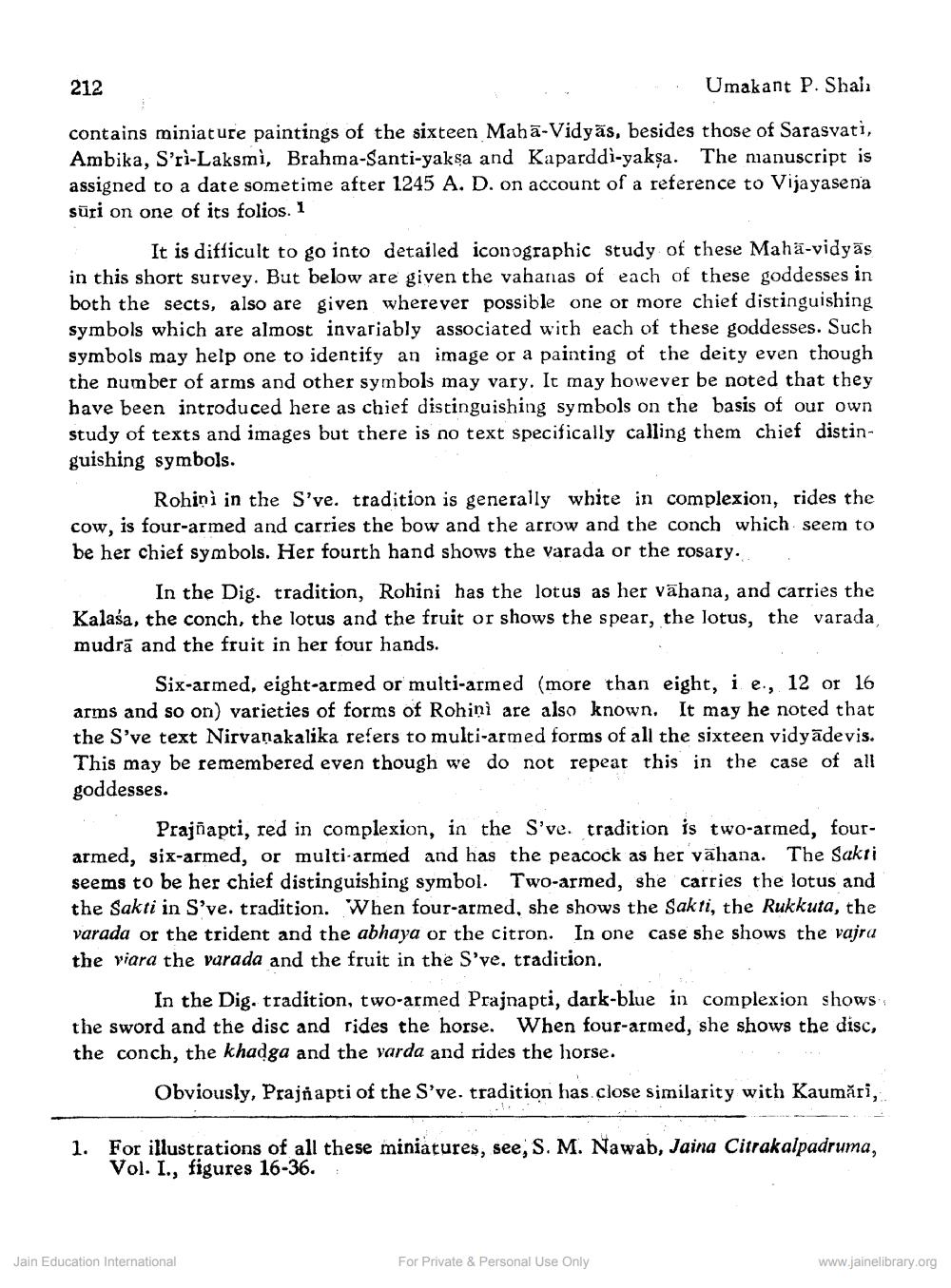________________
212
Umakant P. Shal
contains miniature paintings of the sixteen Mahā-Vidyās, besides those of Sarasvati, Ambika, Sri-Laksmi, Brahma-Santi-yaksa and Kaparddi-yakşa. The manuscript is assigned to a date sometime after 1245 A. D. on account of a reference to Vijayasena sūri on one of its folios. 1
It is difficult to go into detailed iconographic study of these Maha-vidyās in this short survey. But below are given the vahanas of each of these goddesses in both the sects, also are given wherever possible one or more chief distinguishing symbols which are almost invariably associated with each of these goddesses. Such symbols may help one to identify an image or a painting of the deity even though the number of arms and other symbols may vary. It may however be noted that they have been introduced here as chief distinguishing symbols on the basis of our own study of texts and images but there is no text specifically calling them chief distinguishing symbols.
Rohinì in the S've, tradition is generally white in complexion, rides the cow, is four-armed and carries the bow and the arrow and the conch which seem to be her chief symbols. Her fourth hand shows the varada or the rosary.
In the Dig. tradition, Rohini has the lotus as her vāhana, and carries the Kalaša, the conch, the lotus and the fruit or shows the spear, the lotus, the varada, mudrā and the fruit in her four hands.
Six-armed, eight-armed or multi-armed (more than eight, i e., 12 or 16 arms and so on) varieties of forms of Rohini are also known. It may he noted that the S've text Nirvanakalika refers to multi-armed forms of all the sixteen vidyādevis. This may be remembered even though we do not repeat this in the case of all goddesses.
Prajñapri, red in complexion, in the S've. tradition is two-armed, fourarmed, six-armed, or multi-armed and has the peacock as her vāhana. The Sakti seems to be her chief distinguishing symbol. Two-armed, she carries the lotus and the Sakti in S've. tradition. When four-armed, she shows the Sakti, the Rukkuta, the varada or the trident and the abhaya or the citron. In one case she shows the vajra the viara the varada and the fruit in the S've, tradition.
In the Dig. tradition, two-armed Prajnapti, dark-blue in complexion shows the sword and the disc and rides the horse. When four-armed, she shows the disc, the conch, the khadga and the varda and rides the horse.
Obviously, Prajnapti of the S've. tradition has close similarity with Kaumări,
1. For illustrations of all these miniatures, see, S. M. Nawab, Jaina Citrakalpadruma,
Jain Education International
For Private & Personal Use Only
www.jainelibrary.org




